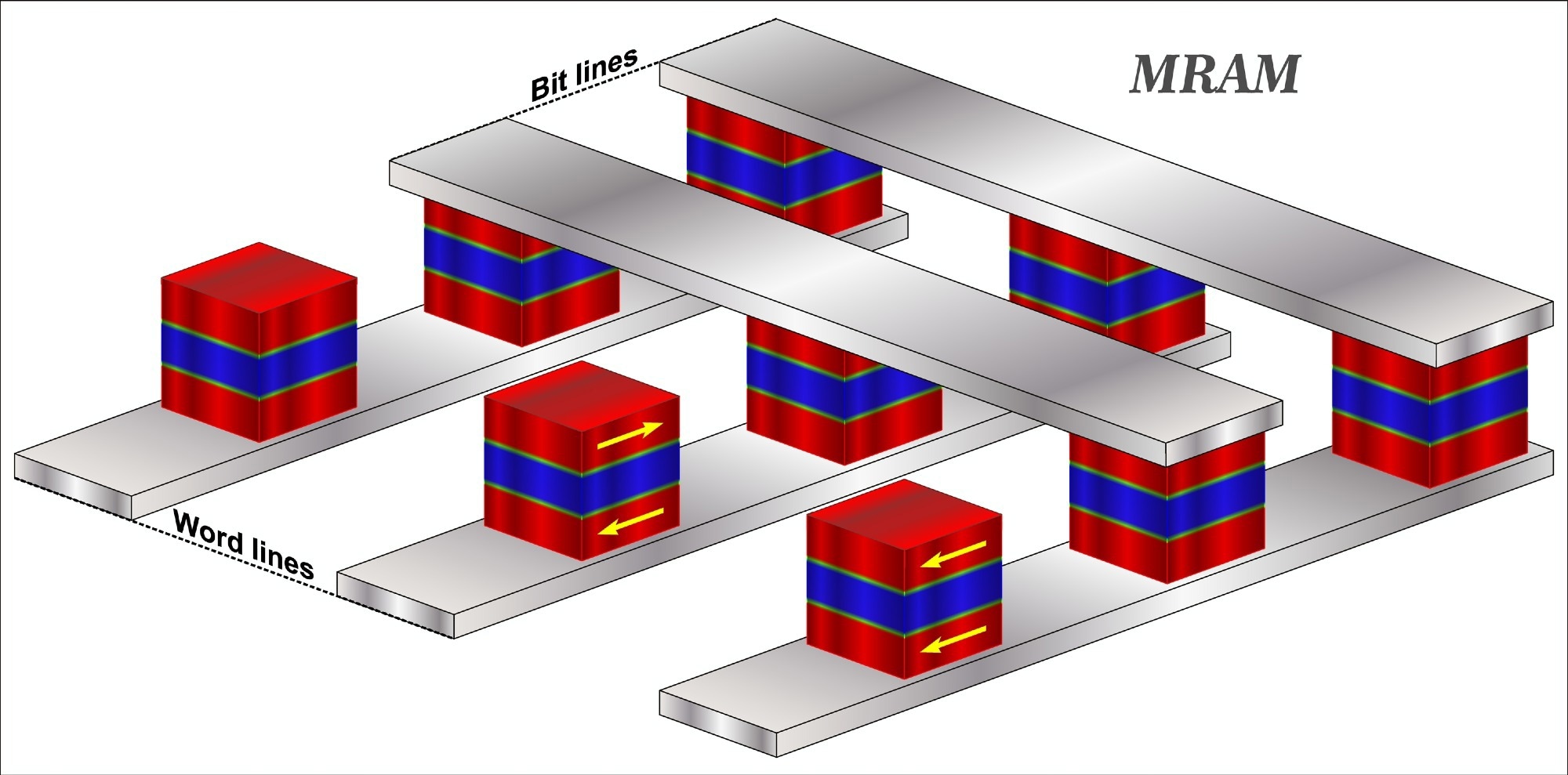Reviewed by Alex SmithJun 28 2022
Computers, tablets, pen drives, and many other electronic devices have non-volatile memory, which means that they can retain data even after a power outage. Magnetoresistive random-access memory (MRAM), which is now only employed in a few applications, is among the technologies that are currently in use and are anticipated to grow significantly on the market over the next ten years.

Image Credit: Shutterstock.com/ Fouad A. Saad
With potential uses in wearable technology, the automotive industry, and the Internet of Things, among others, the newest MRAMs based on spintronic mechanisms, i.e., phenomena related to the spin, an intrinsic property of electrons and other particles, can offer faster operations, lower power consumption, and long retention times.
In this context, 2D materials such as graphene, which are as thin as one or very few atomic layers, could potentially play a disruptive role.
They can really solve present technological problems and performance constraints that restrict the future efficient deployment of MRAMs, and as a result, their distinctive properties can have a significant influence on the design of next-generation spintronic devices.
In a perspective article that was published last week in Nature, the projected improvement and new opportunities that might result from the inclusion of 2D materials into spin-based memory technologies are discussed.
This research, led by the Catalan Institute of Nanoscience and Nanotechnology (ICN2) at the Universitat Autonoma de Barcelona (UAB) campus and the National University of Singapore, gives a summary of the state of the art of the field and the current difficulties in the development of non-volatile memories in general and, specifically, of those using spintronic mechanisms like spin-transfer torque (STT) and spin-orbit torque (SOT).
The authors examine the benefits that the co-integration of 2D materials in these technologies offers, providing an overview of the advancements previously made as well as an outlook on the numerous future developments that might result from the continued study. Also, a potential schedule for development over the following ten years is dicussed.
As thoroughly discussed in the paper, the fundamental properties of 2D materials such as atomically smooth interfaces, reduced material intermixing, crystal symmetries, and proximity effects are the drivers for possible disruptive improvements for spin-based MRAMs. These are emerging as key enabling low-power technologies and are expected to spread over large markets from embedded memories to the Internet of Things.
Prof. Stephan Roche, Group Leader, Catalan Institute of Nanoscience and Nanotechnology
ICN2 group heads and ICREA professors Stephan Roche and Sergio O. Valenzuela, as well as Prof. Hyunsoo Yang from the National University of Singapore, supervised this study.
The French Atomic Energy Commission (CEA), multiple institutes of the Centre national de la recherche scientifique (CNRS, France), Imec (Belgium), Thales Research and Technology (France), and other major businesses like Samsung Electronics (South Korea) and Global Foundries (Singapore), which bring the vision of future market integration, collaborated to carry out the research.
It is impressive to observe the scientific results achieved by the spintronics work package and the technology activities carried out in the Imec environment, together with SMEs (Singulus Technologies, GRAPHENEA), which pave the way towards future impact on market applications. There are still challenges to be overcome to fully deploy the potential of 2D materials in real-life applications, but the expected industrial and economic benefits are very high.
Prof. Jari Kinaret, Director, Graphene Flagship
Prof. Andrea Ferrari, Science and Technology Officer of the Graphene Flagship, stated, “Funding efforts made by the European Commission to support the Graphene Flagship activities could position Europe at the lead of innovation spintronic technologies in a decade timescale.”
Journal Reference:
Yang, H., et al. (2022) Two-dimensional materials prospects for non-volatile spintronic memories. Nature. doi:10.1038/s41586-022-04768-0.